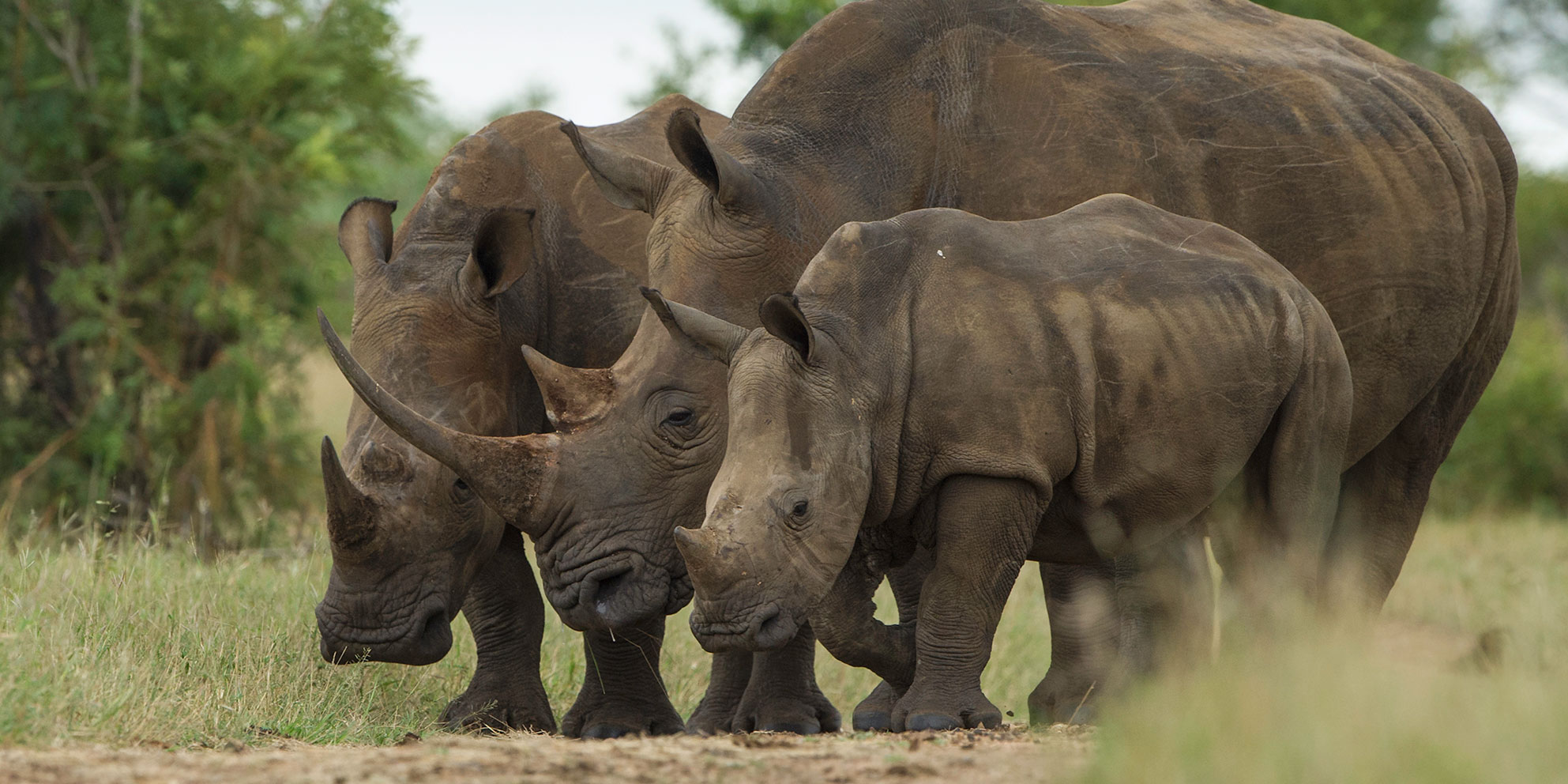The latest annual “State of the Rhino” report by the International Rhino Foundation, published on Sunday, has some glad tidings.
Read more: State of the Rhino
“White rhino populations in South Africa are on the rise despite poaching,” the report says.
Curiously, the report does not mention private ownership of the species, which has been one of the driving forces behind this trend.
The report notes that by 2012, there were more than 21,000 white rhinos on the planet, capping a remarkable comeback from the brink of extinction. A century earlier, there were fewer than 100.
 SA’s white rhino population is on the rebound. (Source: IUCN African Rhino Specialist Group)
SA’s white rhino population is on the rebound. (Source: IUCN African Rhino Specialist Group)
“Unfortunately, from 2012 to 2021, their large numbers made them the primary target for rhino poachers, who are part of transnational criminal syndicates looking to sell rhino horn on the black market. During this period, white rhino numbers decreased by 24% to an estimated 15,942,” the report says.
“Although the number of rhino deaths annually has decreased since the most recent peak in 2015, poaching remains the biggest threat to rhinos – and white rhinos in particular bear the brunt.”
But after a decade of decline, white rhino numbers in South Africa are on the rebound.
“Last year, the African Rhino Specialist Group of the International Union for the Conservation of Nature Species Survival Commission announced the first population increase for the white rhino species in over a decade. They have recently announced another 3.4% increase for white rhinos, bringing their species estimate to 17,464 as of the end of 2023," the report says.
Several factors have contributed to this state of affairs.
Reduced poaching in Kruger
The report notes that the Kruger National Park, once ground zero for the poaching crisis, has significantly reduced its poaching rates. The park lost 78 rhinos to poaching in 2023, a 37% decrease from the previous year.
“Kruger’s extensive and ongoing dehorning programme of all rhinos in core areas continues to save rhinos... The Park has prioritised the dismissal, arrest, conviction and prosecution of SANParks staff (including field rangers) who were enabling poachers or involved in poaching activities themselves,” the report notes.
“Under the leadership of the head ranger, the continued implementation of the KNP Ranger Services Integrity Management Plan is not only assisting in the Kruger National Park but is setting a benchmark for other parks to follow. Indeed, it is being hailed as a model around the globe.”
It’s probably also the case that poaching has declined in Kruger because there are fewer rhinos there now. Still, the park’s efforts should be applauded.
There has also been a poaching pivot to KwaZulu-Natal, where 325 rhinos were illegally killed for their horns last year – 65% of the national total. Of these, an alarming 307 were poached in Hluhluwe-iMfolozi.
As my colleague Tony Carnie recently reported, poaching rates in iMfolozi have also declined markedly thanks to an emergency dehorning programme.
Read more: Poaching at flagship KZN rhino reserve drops dramatically after emergency dehorning drive
The 2024 State of the Rhino report notes in passing that iMfolozi is a “state park”. This gets to the heart of the matter.
Successive ANC administrations in KZN have overseen a dramatic meltdown in government services – a reflection of corruption and incompetence – and the province’s network of wonderful parks has not been spared from this neglect.
State versus the private sector
The relentless poaching of rhinos in government-run reserves is testimony to state failure.
By contrast, as this correspondent has pointed out before, poaching rates on private game farms and reserves have been far lower, and this is where growth in South Africa’s rhino population has come from.
Read more: Two out of three SA white rhinos now in private hands while poachers decimate KZN herds).
While well over half of South Africa’s white rhino population is in private hands, less than 20% of the pachyderms poached last year were on private land. If you invest in an asset, you have an incentive to protect it.
The State of the Rhino report estimates that South Africa’s white rhino population is just shy of 14,000 out of a global total of 17,464.
The Private Rhino Owners’ Association estimated earlier this year that its members have over 8,000 white rhinos grazing on their land – about 60 to 65% of the national herd.
Those numbers included the 2,000 that roamed on the ranch of famed rhino tycoon John Hume, an operation purchased by the NGO African Parks with the aim of “rewilding” the animals.
African Parks this year translocated 120 white rhinos to mostly private reserves under the Greater Kruger Environmental Protection Foundation and 40 to the Munywana Conservancy in KZN, a joint community and private initiative.
The rise in South Africa’s white rhino population in the past couple of years is welcome and hopefully the trend can continue. Megafauna have a mega impact on the environment, and the ecological benefits to be reaped in the veld will be huge.
The private sector deserves much of the credit for this emerging conservation success story, but has come at a significant cost – Hume claimed to have spent about $150-million over the years building up his herd.
And spiralling security costs have increasingly concentrated private rhino ownership into the hands of fewer operators as smaller businesses and game farms have been unable to absorb the escalating price tag for protection.
One thing is certain: it will cost a lot more money for South Africa’s white rhino population to maintain its rebound. And given the poor state of public finances, most of that investment will continue to come from the private sector. DM
https://www.youtube.com/watch?v=REeWvTRUpMk




 SA’s white rhino population is on the rebound.
SA’s white rhino population is on the rebound. 